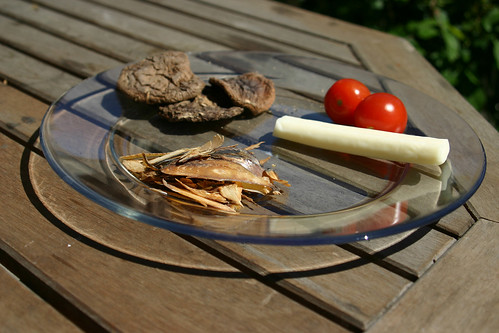Today, I learned about a new movement in culinary arts. Molecular gastronomy. Actually, molecular gastronomy sits somewhere between culinary arts and scientific persuasion. From my brief surfing of the Wonderful WWW, I've digested that the basis of molecular gastronomy is to use molecules to guide what the human mind perceives as being delicious. The term was coined by a French scientist, Dr. Hevre This, and is being actively practiced by Chef Heston Blumenthal of The Fat Duck in the UK. If anyone is interested, you can get a copy of the original manuscript on Molecular Gastronomy here.
Although I didn't realize it was a scientific discipline, I have been practicing the principles of molecular gastronomy for a while now. I know a bit about science and chemistry, and I actually use my scientific knowledge and training in my daily kitchen activities. It's surely no rocket science, and many Japanese cooks routine use this same concept to keep their dishes full of 'umami', the essence of flavor. Basically, there are three major chemicals that the tongue detects as being flavorful: inosine monophosphate (IMP), guanine monophosphate (GMP), and glutamate.
Glutamate is an amino acid, which is the building blocks of all protein. Amino acids are linked together into a chain in protein, and we free individual amino acids during the process of digestion. There are 20 common amino acids and a few wacky ones, but glutamate is the King of Flavorful Amino Acids. It is why Monosodium Glutamate (MSG) was created. As a child in Japan, I remember using MSG freely in soups at shabu shabu joints, calling it "Oishii moto" (the Source of Deliciousness). I no longer depend on artificial sources of glutamate, but I am acutely aware of its presence and use it to balance my broths routinely. Glutamate is found abundantly in cheese, tomato, chicken broth, and the Japanese broth-stand-by, Kombu.
IMP and GMP are components that eventually lead to nucleotides. Nucleotides are the building blocks for DNA. I find it interesting that what we detect as flavorful are what builds our core being as protein and DNA. IMP leaks out of beef, pork, and dried fish, such as the other Japanese broth-stand-by, bonito flakes. Finally, GMP comes from mostly fungal species, such as the last of the Japanese broth-stand-by, dried shiitake.

I call the balancing of the grand trinity of flavorful chemicals as having 'depth in flavor'... ...or simply, 'yummy'.
Molecular Gastronomy. This could be my retirement plan.
No comments:
Post a Comment